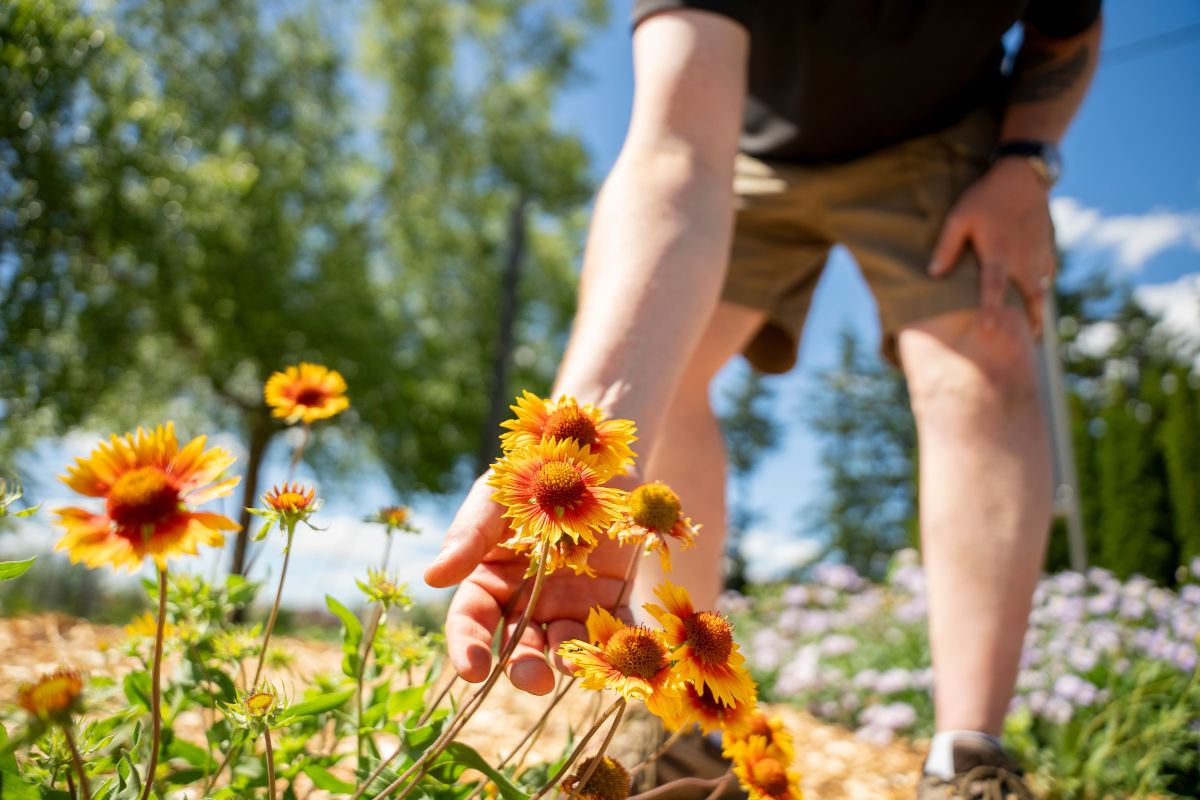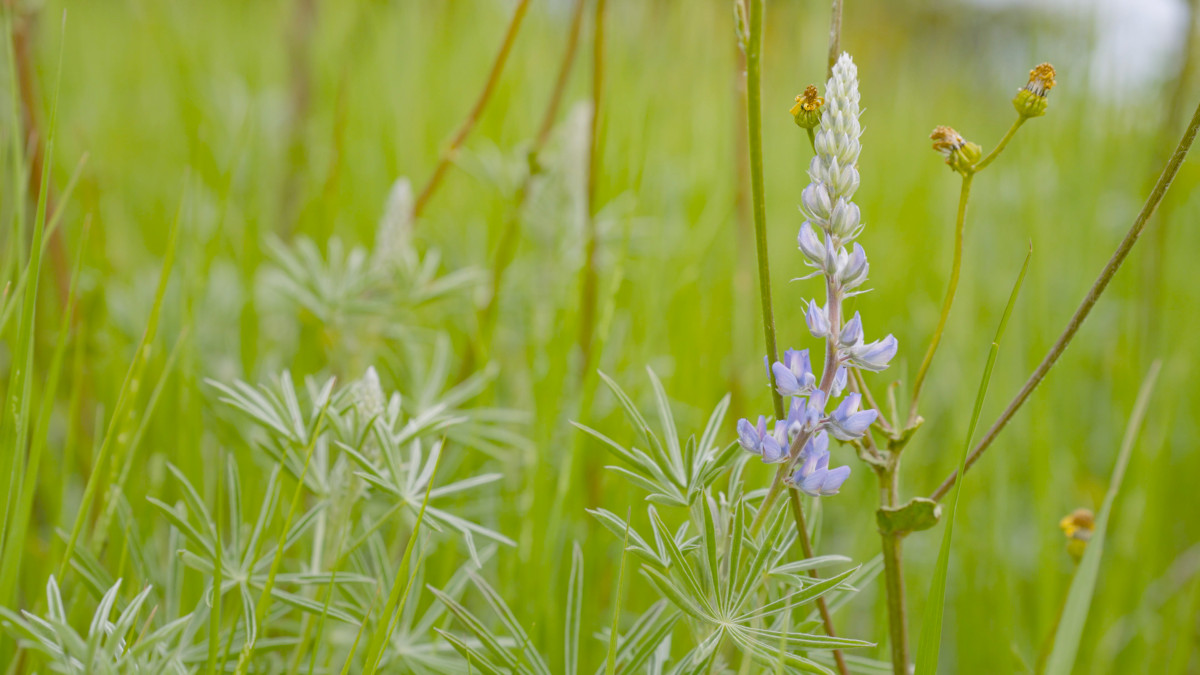U of I horticulturist boosts Palouse prairie ecosystem
Karl Meyer enhances campus with pollination stations and Vandal golf course sustainability certification
On a whiteboard in Karl Meyer’s office at the facilities headquarters on the west side of the Moscow campus is a rendering of a wild geranium.
The plant, its leaves and flower depicted with botanical precision, is drawn with a black dry erase marker.
Meyer, U of I’s environmental horticulturist, sketched the plant for fun.
We’re keeping alive this incredibly beautiful, but fragile, endangered ecosystem.
— Karl Meyer, environmental horticulturist
“I don’t use dry erase boards much so I thought I would put something on it that I enjoyed looking at,” Meyer said with a grin.
The grin, resonating through an earth-colored beard and from under a ballcap, is the same grin Meyer shows when he talks of his work on the Moscow campus where he is charged with achieving and maintaining several of U of I’s sustainability goals.
What does that mean?
Meyer’s efforts include earning an Audubon Cooperative Sanctuary Program certification for the Vandal golf course that ensures the course protects the environment, conserves water and preserves the natural heritage of the game of golf while enhancing natural areas and wildlife habitats.
Planting indigenous Palouse Prairie vegetation in and around the course is part of the effort and it’s where Meyer’s expertise flourishes.

Meyer learned of the Palouse Prairie ecosystem as a student at the College of Natural Resources where he earned a degree in natural resource conservation. Afterwards, he worked for the Palouse Land Trust and his devotion to preserve what remained of the prairie was cemented into his psyche.
“The Palouse Prairie is one of the most endangered ecosystems in the continental United States, with less than one percent remaining within its original range,” Meyer said.
Most of the prairie has been turned under by agriculture. Some chunks remain in places such as Steptoe Butte State Park and small pieces of undeveloped state and county land, and on private land in areas unsuitable for farming such as steep slopes or rocky soils.
Planting prairie remnants on the U of I campus will ensure a haven for Palouse native plants such as little sunflower, prairie smoke, and the sticky purple geranium that is depicted on Meyer’s office white board.
It will also make sure that habitat for our native pollinators will remain available in a managed landscape.
Meyer’s work includes maintaining U of I’s affiliation with Bee Campus USA. The certification recognizes U of I’s work to conserve native pollinator species such as short-faced bees, miner and fairy bees, sweat and bumblebees by increasing native plantings, providing nesting sites and reducing the use of pesticides.

Sustainable golf course
Karl Meyer, U of I’s environmental horticulturist, talks about campus sustainability efforts at the Vandal golf course
Meyer doesn’t pretend to know all the bee species that are targeted by the native vegetation pollinator stations that he has planted around campus.
“There are like 4,000 native bee species in the USA,” he said.
But he recently established a pollination station catering specifically to one specific bee species.
“Mason bees are smaller than a honeybee,” he said. They use mud to build cavities in naturally occurring gaps and cracks in stones or other small dark cavities.
“They pollinate more than 90% of the flowers they visit whereas honeybees pollinate about 5%, so they’re very important to flower pollination,” he said.
The mason bee pollination station in the courtyard between Life Sciences and Gibb Hall serves two purposes. Not only do the mason bees pollinate prairie plants, but scientists in the biology department swab fungus samples from the bee houses and culture them for use in their research.
Meyer, an amateur ornithologist and nature photographer– “I have a lot of hobbies,” he admits – hopes that the Palouse Prairie plantings on campus can be used as teaching aids by classroom instructors. Growing the plots throughout campus is another way to spread knowledge of the endangered native prairie to upcoming generations of students.
“Keeping the excitement for the ecosystem alive for generations to come is how I can make a difference in my role as the university’s environmental horticulturist,” Meyer said. “By doing that we’re keeping alive this incredibly beautiful, but fragile, endangered ecosystem.”
Article by Ralph Bartholdt, University Communications.
Photos by Melissa Hartley and Garrett Britton, University Visual Productions.
Video by University Visual Productions.
Published August 2024.








